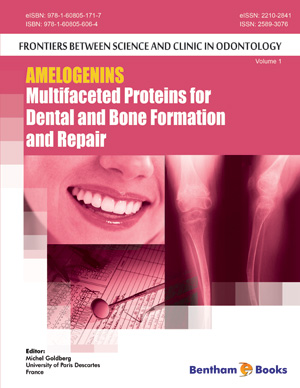Abstract
Hypermineralized tissues related to enamel are identified in early vertebrates, 450 millions years ago (Ma). The enamel matrix proteins (EMPs), amelogenin (AMEL), ameloblastin (AMBN) and enamelin (ENAM) being enamel specific, we can deduce that they were recruited early in vertebrate evolution. Molecular analyses support their presence by the end of Precambrian period ( > 600 Ma), i.e., prior vertebrates differentiated a mineralized skeleton. However, our knowledge of EMPs is currently limited to tetrapods, i.e., 360 Ma. AMEL was created from AMBN, itself resulting from a duplication of ENAM. EMP genes are therefore paralogs. The evolutionary analysis of AMEL highlights conserved and variable regions. The N- and C-terminal regions contain numerous residues that were unchanged during 360 Ma, which supports important functions. Only a few positions are known to play a role. Other positions are considered as being crucial because they are unchanged. Five of them are known to lead to a genetic disease, X-linked amelogenesis imperfecta (AIH1) when substituted. The largest AMEL region, encoded by exon 6, is less variable in mammals than in sauropsids and amphibians, but it accumulates numerous indels in all lineages. It was created through the repeat of PXQ triplets. Similar repeats occurred independently at the same locus in mammalian species, but their meaning is still obscure. The evolutionary analysis of AMEL allowed to validate functional residues and positions known to lead to AIH1 when changed. It also highlighted residues that could have interesting functions and predicts these conserved positions will lead to AIH1 when substituted.
Keywords: Amelogenin, EMP, Enamel, Tetrapods, Evolutionary Analysis, Conserved Positions, Amelogenesis Imperfecta






















